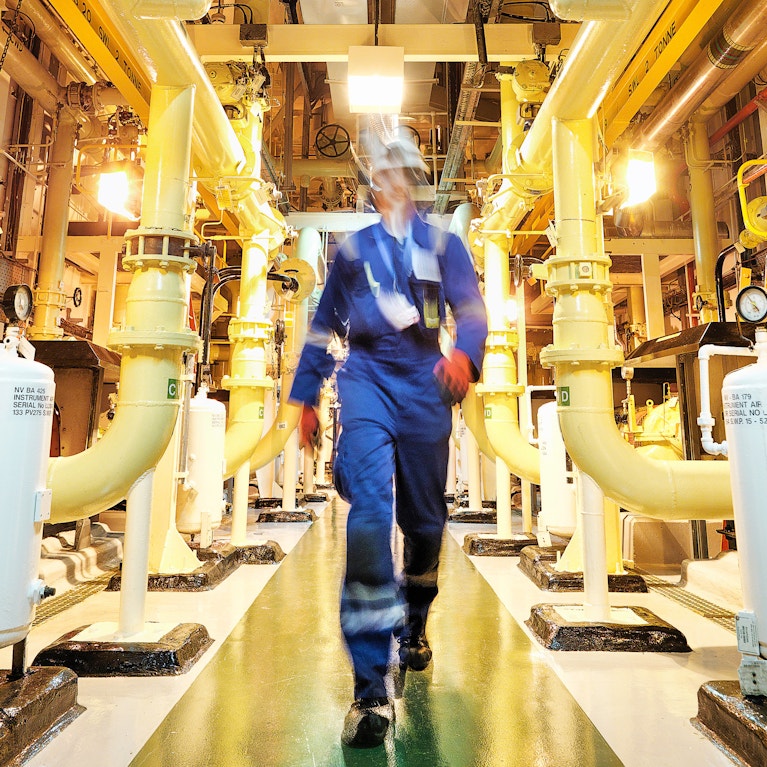
Defence Science and Technology Laboratory
Experiencing the future through virtual reality
Tags
Organisations, agencies and public bodies face an incredible challenge to keep pace as innovative technologies, societal trends and climate change are all coming together to create new threats and opportunities. By exploring possible futures, we can prepare flexible strategies, build organisational resilience, and ultimately secure growth in the face of whatever future comes. But how do we anticipate change when humans can’t predict even the immediate future?
PA worked with the Defence Science and Technology Laboratory (Dstl), the science arm of the Ministry of Defence (MOD), to tackle this challenge. We applied a mix of innovation, technology, commercial and programme management expertise to lead the development of an ingenious Virtual Reality (VR) platform.
The platform virtually ‘transports’ defence and security policymakers to the future, challenging their thinking and inspiring new approaches – in a way that written reports cannot. The outcome will be informed and imaginative defence policy that is more considerate of the potential futures generated by the rapid and dramatic changes in the world around us, and will help make the UK safer for future generations.
Key successes
- Collaborated with Dstl to uncover the potential of Virtual Reality (VR) to transform policymaking
- Applied technology, commercial and programme management expertise to lead development of a ground-breaking VR platform
- Generated over 200 ideas for ‘exhibits’ and defined potential future worlds for exploration
- Created a unique multidisciplinary collaboration between VR specialists, sci-fi authors, academics and futures experts to explore new perspectives and harness creativity, including co-authoring an academic paper
Understanding emerging defence and science threats
The world is changing so fast it’s almost impossible to imagine what the future could look like. But this is what governments must do to make the right decisions now to create a positive future in the decades ahead.
In the field of defence and security, the challenge is especially urgent. Here, innovative technologies, societal trends and climate change are all coming together to create new threats and opportunities. That’s why a key challenge for the Defence Science and Technology Laboratory (Dstl) is to find new ways to help policymakers think imaginatively about possible futures.
Long, dense reports are rarely effective in bringing the challenges to life, particularly for non-subject matter experts with limited time. But virtual reality has the potential to make a far greater impact – to take decision makers out of their everyday roles and immerse them in experiencing just how different things could be. With a deeper understanding of how the world could develop, those responsible for the UK’s future security will be better placed to develop impactful policies to address strategic threats.
Inspiring innovative future thinking
We already have experience of working with Dstl to develop ideas and tools to inspire innovative future thinking. We’ve helped them commission a set of inspirational tools to stretch the organisation’s thinking about the future, and we’ve worked with them to design a radically new quantum technology. To build on this, we led a ground-breaking project to bring these ideas to life in a virtual reality platform called ‘Museum of the Future’.
Alongside VR exhibits that are futuristic versions of things that already exist – a space-going version of a naval ship, for example – the museum houses a set of fully immersive VR ‘worlds’. By entering these worlds, users can explore the impact of military and policy decisions, the potential impact of different technologies and the nature of possible future operating environments. Also, scientists can use the worlds to exploit VR’s potential as an experimental tool to research the effectiveness of these interventions.
The Museum of the Future represents a highly multi-disciplinary futures approach that combines humanities, science and technology to drive new insight. The future worlds are designed to test the users comfort experiencing alternative futures, challenging their assumption and prompting them to explore new ideas and think differently”
Leading technology innovation
The project was a perfect fit with PA’s purpose – we believe in the power of ingenuity to build a positive human future. And we specialise in working with organisations to help them find innovative solutions to their biggest challenges.
We brought a blend of diverse capabilities and experience to a programme that involved a unique mix of skill sets, thinking styles and personalities. The consortium we led included VR specialists, sci-fi authors, digital designers and Dstl futures experts as well as PA’s own innovation, technology and defence and security experts. We also brought together leading academics, leveraging their deep insights and learnings, to develop an academic study into the potential of VR for policy making in government.
In addition, our wide experience across the public sector on strategic government programmes meant we understood how to lead the programme effectively in this distinctive environment.
Generating and sifting ideas
We launched the programme by assembling our most innovative thinkers to brainstorm ideas. We ran two workstreams: one focused on technology trends, the other on defence issues. Through these virtual events, which took place during the pandemic, we generated over 200 ideas for the museum.
We applied a broad range of disciplines to screen these myriad ideas and identify those with the greatest potential. We approached this as a creative process, looking at ways to blend ideas to develop imaginative and productive scenarios. We then measured these against a range of criteria. Was the concept technically feasible and deliverable within the scope of the project? How likely was the scenario to come to pass? Was it relevant for defence and security users? Did it push VR boundaries?
We knew from working with PA that they could bring a rich mix of capabilities to this ground-breaking project – not just superb technical expertise, but deep understanding of the innovation process. They have an ability to develop our initial concept and bring them to life in exciting ways”
Finalising concepts and launching development
At the end of this process, we selected three different scenarios for development, each of which combined multiple ideas from technology and defence and security trends. These were:
- A flooded city world where the gap between rich and poor is accentuated. Users, in the role of UN peacekeepers, can traverse the world in a cable car observing how differences in wealth play out in an altered physical environment.
- A world where there are no more borders. In this world, users debate with an avatar that wants to renounce the concept of nationality. A news report, derived from a Q&A with each user, reveals the impact their attitudes would have if taken up across society.
- A forested world where civilisation has fallen and technology is obsolete. Users are teleported into this world, which deliberately seeks to create a sense of estrangement and to demonstrate how uncertain the future is.






With go-ahead from Dstl, we allocated a dedicated team of VR specialists, sci-fi authors, digital designers and academics to develop each concept. The teams began to sketch out how each world would look and create the stories that would lead users through them to challenge their thinking. The outcome from this phase was a full brief for the VR developers building each world and programme managed by PA.
Working with the PA-led consortium was inspirational. They were expert at harnessing the creativity of the different specialists involved. This produced a final project that is genuinely novel and thrilling to be immersed in”
Launching the virtual reality museum
Six months on, the virtual worlds are complete and the museum is ready to launch. Initially, Dstl will make the museum available to senior decision makers across the Ministry of Defence and MOD Front Line Commands. But the potential for wider application is already being recognised.
Envisaging the potential beyond defence and security
Looking ahead, VR will play an increasingly important role in policy development, not just in defence and security but in wider government and eventually in the private sector.
Virtual reality provides an engaging environment that pushes and challenges users to explore ideas about the future. This concept has great potential for any organisation looking to develop imaginative and relevant strategy in a world that is transforming at breakneck speed.”
A very diverse group of thinkers and creative specialists was involved in realising the vision for the Museum of the Future. PA led the group with skill and assurance to deliver an ingenious platform that enables policymakers to experience the complex challenges that lie ahead in the defence and security arena”
For now, VR concepts like the Museum of the Future will make it easier for senior decision-makers across government to grasp the reality of possible future scenarios in a way that conventional reports cannot. This creates the context for better choices and more imaginative solutions to address future threats and opportunities – and, in the field of defence and security, will play a vital role in keeping the nation safe.
Explore more





